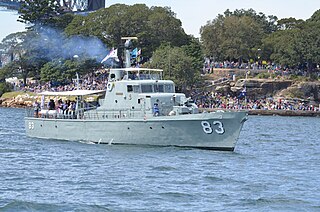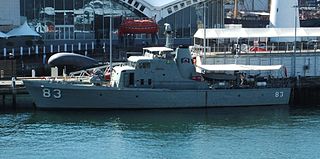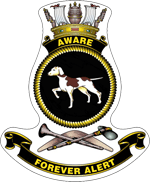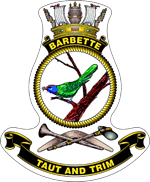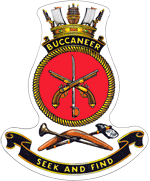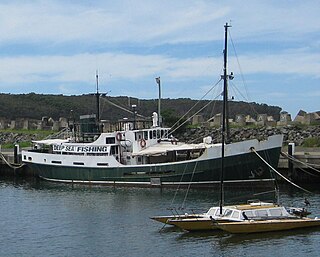 Sailors from USS Missouri cheer to honour Prince Philip as he passes by aboard HMAS Cook in 1986 | |
| History | |
|---|---|
| Namesake | Captain James Cook |
| Builder | HMA Naval Dockyard, Williamstown, Victoria |
| Laid down | 30 September 1974 |
| Launched | 27 August 1977 |
| Commissioned | 28 January 1980 |
| Decommissioned | 31 October 1990 |
| Identification | IMO number: 8872784 |
| Motto | "With Diligence and Skill" |
| Fate | Converted to merchant vessel, fate unknown |
| Badge | 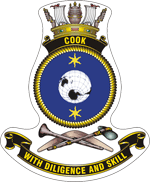 |
| General characteristics | |
| Type | Oceanographic research vessel |
| Length | 316.6 feet (96.5 m) in length overall |
| Beam | 44 feet (13 m) |
| Draught | 15.1 feet (4.6 m) |
| Propulsion |
|
| Speed | 17 knots (31 km/h; 20 mph) |
| Range | 11,000 nautical miles (20,000 km; 13,000 mi) at 14 knots (26 km/h; 16 mph) |
| Complement | 150 + 13 scientists |
| Armament | Light calibre weapons only |
HMAS Cook (GOR 291/A 219), named after Captain James Cook, was an oceanographic research vessel of the Royal Australian Navy (RAN).
Design work for a dedicated oceanographic research vessel to replace the converted frigate HMAS Diamantina began in the late 1960s. [1] The ship was ordered in 1973. [1] Cook was 316.6 feet (96.5 m) in length overall, with a beam of 44 feet (13 m) and a draught of 15.1 feet (4.6 m). [2] Displacement was 1,900 tons at standard load, and 2,450 tons at full load. [2] Propulsion machinery consisted of diesel engines, connected to two propeller shafts. [2] Top speed was 17 knots (31 km/h; 20 mph), with a range of 11,000 nautical miles (20,000 km; 13,000 mi) at 14 knots (26 km/h; 16 mph). [2] Cook was operated by a ship's company of 150, with facilities for up to 13 civilian scientists. [2] The ship's armament was limited to light calibre weapons only. [2]
Cook was laid down by HMA Naval Dockyard at Williamstown, Victoria, [2] on 30 September 1974, launched on 27 August 1977 and commissioned into the RAN on 28 January 1980. [1] After a six-year construction period the ship spent another two years in dockyard hands fixing defects from the building period, including the realignment of the entire propulsion mechanism to reduce vibration. [1]
Cook paid off on 31 October 1990 and was sold for conversion as a small cruise ship and subsequently renamed "Maria Kosmas" - IMO number 8872784.[ citation needed ] As of 2009, the vessel was in the United Arab Emirates) under the name "Cosmos", in the hands of Platinum Yachts and laid up next to the EasyCruiseOne for conversion into a private yacht, but work had been suspended. [3] In 2022, both vessels were dismantled even though the conversion had made progress earlier. [4]


